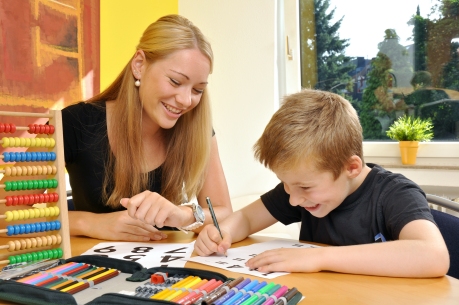Dyslexia has a greater impact than just reading. It impacts a student’s self-confidence, classroom performance, as well as their long-term academic achievement. A comprehensive program for dyslexia tutoring is more than just help with homework. It’s a research-based journey that starts with the right assessment and ends with literacy skills you can use throughout your life. This article explains how an effective dyslexia tutoring program starts with the CTOPP-2 assessment, builds skills using Orton-Gillingham (OG) training, and measures progress through fluency.
Comprehending The Starting Position: CTOPP-2 Assessment
The Comprehensive Test of Phonological Perception-Second Edition (CTOPP-2), part of the structured dyslexia program, is often a first step. This tool assesses a student’s strengths and weaknesses in phonological processing–critical skills that are essential for reading. It is designed to evaluate:
- Phonological Awareness: the ability of a speaker to manipulate and identify sounds.
- Phonological remembrance: the ability to remember spoken data for a very short period.
- Fast Symbolic Naming: How quickly an individual can name familiar letters and numerals.
These components assist tutors in determining whether a child’s reading struggles are consistent with dyslexia. The baseline data guides lesson planning and provides a measurable measure for tracking progress.
A program for dyslexia tutoring, by building an individualized road map based upon CTOPP-2 statistics, can customize each student’s learning to meet them right where they are. This strategy is very successful and efficient.
Instructions To Build The Foundation: Orton-Gillingham
The Orton Gillingham (OG), the most widely used structured literacy approach, will be the first step in the intervention. OG uses a multisensory approach that is sequential and cumulative. It was designed specifically for students with dyslexia. Lessons are highly individualized and focus on the following:
- Phonological Awareness: Recognizing individual sounds and working to improve them.
- Correspondence between Sound and Symbol: teaches how to relate letters to their sounds.
- Syllable types and patterns: helps students decode unknown words.
- Spelling patterns and rules: Improve your written expression.
Each OG session includes explicit teaching as well as guided practice and reinforcement. The students learn how to spell and read, and are also taught why English Words follow specific patterns. This is particularly important for dyslexic students who must develop their understanding of English words from scratch rather than relying purely on intuition.
Unlike traditional classroom lessons, OG lessons allow the tutor to modify the pacing of instruction as needed and use multisensory approaches, such as tapping out sounds and using sand trays.
Fluency And Mastery: Measuring Progress
To be successful in a tutoring program for dyslexia, you must not only learn phonics. Instead, you need to gain fluency and mastery when reading. Fluency requires reading quickly, with accuracy, and using the correct language. Fluency is necessary for reading comprehension.
Fluency Rubrics and benchmark passages are typically used to measure progress. Students gradually move from reading individual words to connecting texts. As decoding becomes more effortless, comprehension and pleasure improve.
They also assess:
- Spelling Accuracy: In dictation, writing, and composing.
- Word Recognition: On-sight word lists
- The Decoding Ability: Measures the Students’ Phonics Rules Application on Unknown Words
CTOPP-2 is administered periodically by tutors to gauge the progress of phonological learning gains in rapid name speed or phonological knowledge, signal cognitive growth, not just academic improvement.
Supporting The Student Beyond The Lesson
A comprehensive dyslexia teaching program includes more than just academic drills. It also includes strategies to boost executive function skills and parental guidance. Parents are given strategies that will help support reading at home.
Some programs utilize digital tools to enhance the learning experience between sessions. At the same time, others provide small group experiences for students in a supportive environment.
The most successful programs strive to re-establish confidence. Once students experience success, even small ones, they will perceive themselves as capable. This change in mindset is equally important as phonics education.
Conclusion:
With the correct approach, dyslexia is not a thing of the past. The CTOPP-2’s diagnostic power, the foundational strength of OG, and the empowering impact fluency gains have on students are just some of the benefits of a structured learning journey.
Through targeted support with consistent progress monitoring, students can move from struggle to strength. Not only do they gain literacy skills, but they also gain the self-confidence and resilience to meet new learning challenges. A dyslexia teaching program implemented with skill and empathy can transform lives.
